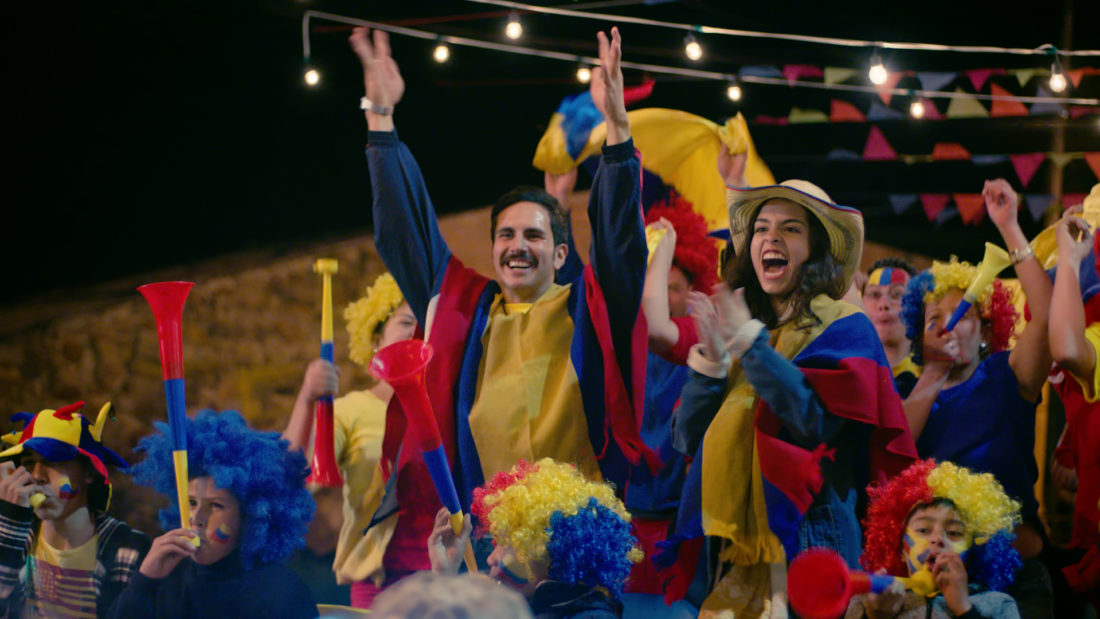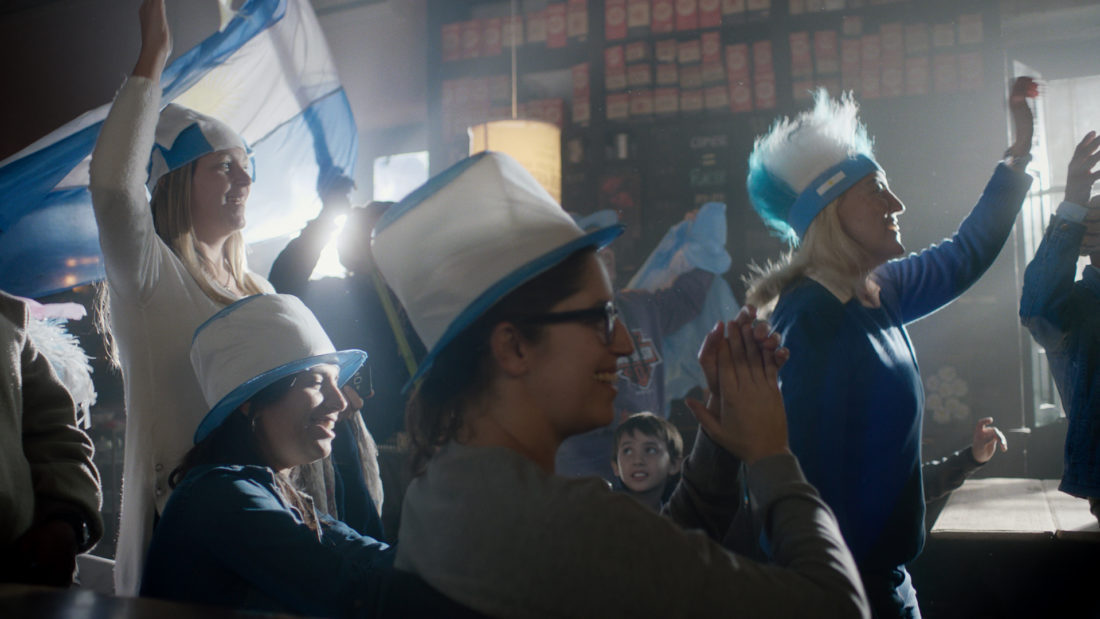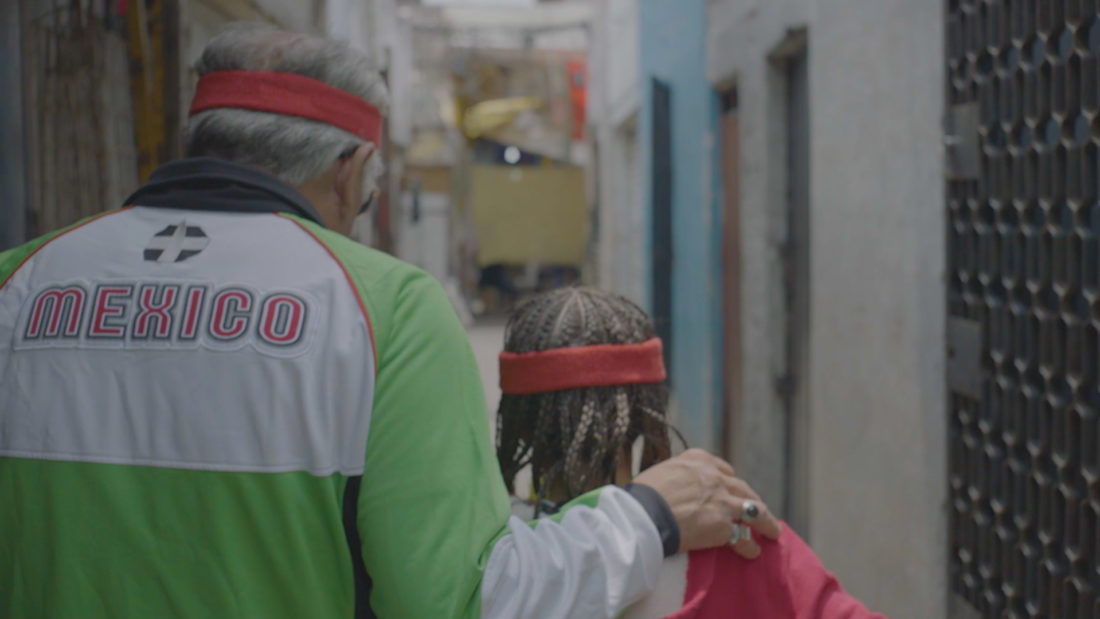
The World’s Game—a.k.a. Football—Celebrates the Soundtrack to Life
The World Cup commands a lot of spirit—and songs. After all, who could forget Shakira’s 2010 anthem, “Waka Waka (This Time for Africa)” as it dominated the charts throughout the tournament?
To pump up viewers worldwide for the World Cup, which starts June 14, we are taking listeners beyond the playing field in an original vertical video series, “The World’s Game,” debuting on our¡Viva Latino! enhanced playlist. Starting today, fans can tune into the playlist every Friday in June and tap into the energy behind game-day preparations and celebrations in countries where football dominates sports viewing: Colombia, Brazil, Mexico and Argentina.
In each video we see football fans engaging in the rituals, superstitions, and traditions particular to the featured country as they prepare for the World Cup. Woven throughout is a special performance by a local top artist or band, tailored to the event. Each artist represents a relevant genre for the country, from electronic and regional Mexican (ranchera) to urban and pop.
In the first video, Colombia’s ChoQuibTown covers “Colombia Caribe.” Sometimes known as “Si, Si Colombia,” the anthem was created by Francisco Zumaqué in 1985 and became associated with the Colombian national team in the preliminary rounds before the 1990 Italian World Cup. To make the song their own, ChoQuibTown sampled aspects of the original, such as the chorus and mambo, and then added different rhythms like chandé, trap, and reggaetón to modernize the hit.
Tostao, lead singer and rapper of ChoQuibTown, explained that the band covered the anthem because ”the song is like a battle cry for the entire country, positively cheering on something that always unites us as Colombians: football. We as a band are very big soccer fans. We are Latinos and we love the mix between football and music. Remember that music is the soundtrack of life, and life in Latin America always has a lot of football.”
Similarly in the second video, “Y Dale Alegria,” performed by Argentinian singer Lali, is “one of the anthems of Argentina’s music history,” says the singer, who is set to launch her third studio album in August. “Its lyrics are epic, deep and simple at the same time and reflect the emotion and simplicity of joy and faith. Football unites the world and the World Cup is a celebration. Argentinians are passionate. Whether it’s soccer or music, they live it with emotion. At stadiums in matches, people sing and feel the music with passion. I grew up watching football and listening to music, so my bond with both of them is really strong. This is the reason why I chose to cover this song and to record a ‘female’ version.”
Some of the videos reflect the country’s pre- and post-game rituals. In the Brazilian video, for example, a girl on the beach with yellow flowers represents a ritual that honors Yemanja, the queen of the seas, a strong character in Brazilian culture who is believed to bring protection. Another shot shows a lady “reading” shells, as one might do with a tarot card, connecting with good spirits known to solve problems (such as a difficult football match). Finally, a man at a bar uses a talisman called a “figa” (similar to a rabbit foot) to remove bad luck. It’s all set to “Baiana” performed by DJ Alok, along with the song’s original creator Barbatuques and the up-and-coming rap duo, Foreign.
Mexican singer Carlos Rivera’s rendition of “Cielito Lindo,” which the artist often performs with Mariachi accompaniment, also ties directly to the World Cup. After any big national team win, thousands of Mexicans gather around “El Angel” monument in Mexico City and sing the song.
Rivera noted that he chose to perform “Cielito Lindo” because “it is the ideal song to celebrate and show the soul of Mexico to the world.” The song, and particularly the verse, canta y no llores (sing instead of cry), speaks deeply to Mexican pride and positivity, even in the hardest times. Rivera also said that while he recorded this version with the traditional Mariachi sound, he also made sure to include aspects that “reflected the party atmosphere and the chorus of thousands of people singing the song in a stadium after a game.”
As the players toe the line, spectators gear up to support their teams. Though the songs, superstitions, and cheers may differ, fans from any country can agree on one thing: a collective love for the energy and spirit that surrounds the World’s Game.














